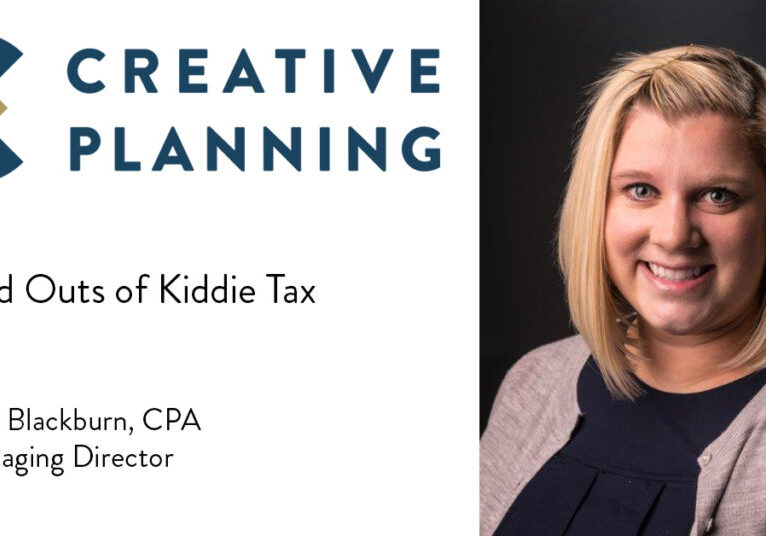Revised rules prohibit hide-and-seek of childrens’ investment income
As a CPA, I get asked nearly every day by individuals “how can I pay less in taxes?” Some individuals suggest that they shift investment income from themselves to their young children to tax that income at their children’s lower tax rates. In the 1980s, the IRS put rules and regulations in place to limit tax savings by transferring income to their children known as the Kiddie Tax rules. The Kiddie Tax rules were put in place to eliminate parents getting tax savings by transferring their investment income to their children. Under the Tax Cuts and Jobs Act (TCJA), the Kiddie Tax rules have changed drastically.
Under the original Kiddie Tax rules, if a child has any type of investment account in their name and social security number, they must file a return if total investment income is over $1,050. Prior to 2018, the IRS allowed those dependents who only had investment income over the $1,050 to elect to include that investment income on the parents’ return and not file a separate return for themselves. Under TCJA, this election is no longer allowed.
Kiddie tax is a separate set of tax rates on investment income over $2,100 for children who are under 19 years of age or under 24 years of age if a full-time student and whose earned income does not exceed half the annual expenses for their support. A child does not need to be claimed as a dependent on his/her parents’ return in order to be subject to Kiddie Tax rules.
In previous years, Kiddie Tax rules taxed a child’s investment income over $2,100 at the highest tax rate on their parents’ return. If the taxpayers had multiple children, all the children’s investment income was aggregated for Kiddie Tax purposes. This required the child to wait until his/her parents’ return and other siblings’ returns were completed to complete their own return.
Under the TCJA – starting in 2018 through 2025, instead of attaching investment income over $2,100 to the parents’ tax rates, the IRS has decided that investment income subject to Kiddie Tax rules will be taxed at trust and estate tax rates (see chart below).
Trust and Estate
Taxable Income |
Tax Rate |
| $0 – $2,550 | 10% of taxable income |
| $2,550 – $9,150 | 24% of the amount over $2,550 |
| $9,150 – $12,500 | 35% of the amount over $9,150 |
| $12,500 or more | 37% of the amount over $12,500 |
The downfall of the new Kiddie Tax rules is that the trust and estate tax rates increase to the top tax bracket at a much quicker speed than individual rates. Investment income is taxed at the top rate of 37% once total income is over $12,500 instead of $500,000 for single filers or $600,000 for married filing jointly.The new Kiddie Tax rules under the TCJA greatly simplify the calculation of the tax by applying one set of tax rates to a child’s investment income. That income is also no longer affected by the parents’ return or any siblings’ returns and can be filed on its own timeline.
Kiddie Tax rules and regulations can hinder the way you would like to pass off your income to your children or grandchildren. Proper financial and tax planning is required to make sure the best decisions are made.



